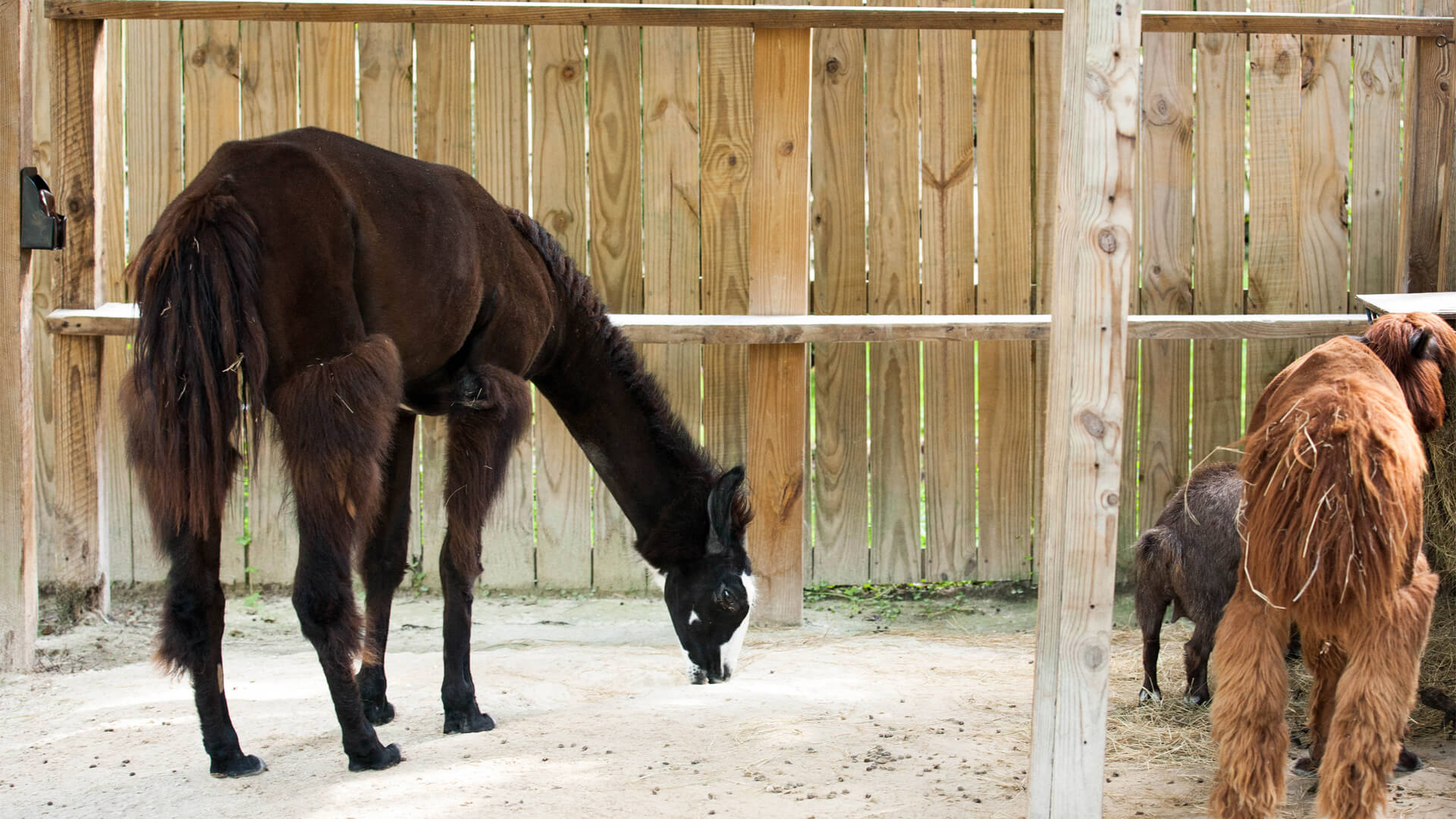
Llamas are the largest of the South American camelids. They have long limbs and necks with shaggy coats that vary in color. They don't have hooves but rather two padded toes which aid in keeping their footing on rocky trails and gravel slopes.
Llamas play an important role in the lives of the native people of Argentina, Bolivia, Paraguay, Chile, and Peru as pack animals. They can carry heavy loads through the Andes Mountains. They can carry 25% of their own body weight for several miles. At the high altitudes they traverse there is a shortage of oxygen. To combat this lack of oxygen, llamas have a very high red blood cell count and their hemoglobin is oval-shaped, allowing it to carry large amounts of oxygen. Llamas eat low shrubs and grasses, getting most of the moisture they need from their food. Llamas are ruminants with three stomachs.

Llamas are herbivores. This means they only eat plants. Come visit our llama, Andre, and you'll have the chance to feed him some of his favorite snacks!

Brittany
The people of South America have been using llamas as pack animals to carry goods over the Andes for centuries.
Argentina, Bolivia, Paraguay, Chile, Peru
Andes Mountains
116–164kg (256–360 lbs) | 3–4 ft shoulder height
Grasses and shrubs
Puma, Andean foxes, coyotes
Vocalizations
One baby per year
Least Concern
Up to 20 years
